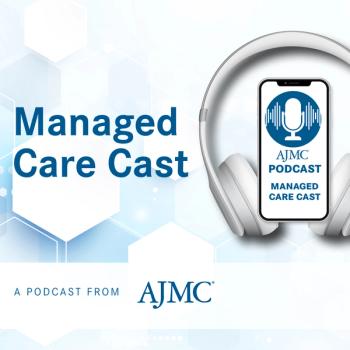
Mailed Stool Tests Increased CRC Screening in Systemwide Program
The implementation of a mailed stool test program increased colorectal cancer (CRC) screen-up-to-date rates compared with lower-intensity interventions, such as patient letters.
A fecal immunohistochemical stool test (FIT) program was able to increase the rates of
CRC is the second-leading cause of cancer deaths in the United States, with screening being recommended by the US Preventive Services Task Force. Screening has improved but still is lower than desired. Promoting screening can be done by health systems by employing different strategies. This study aimed to assess the population-based rates of screening for CRC, contrast screen-up-to-date rates, evaluate differences in strategies to improve screening, and identify the predictors of being screen up to date (SUTD).
The study was retrospective and based in Parkland Health, a health system in Dallas County, Texas, which provides care for 1 million low-income uninsured and underinsured residents of Dallas County. Participants aged 50 to 74 years were included if they had at least 1 primary care encounter at a Parkland primary care clinic from 2011 to 2020. Patients were excluded if they had a history of CRC, colectomy, or
The primary outcome was met if the patient was SUTD on their CRC screening in a calendar year. Patients were up to date if they had a home stool blood test in the previous year, had a colonoscopy in the past 10 years, or had flexible sigmoidoscopy in the previous 5 years.
Patients were randomized into 2 groups, with 1 group receiving a mailed FIT kit and the other group receiving an invitation for screening colonoscopy with scheduling facilitated from March 2013 to July 2016. This was expanded in 2018 to mail 12,000 to 15,000 kits per year for patients who weren’t SUTD. This program was implemented from September 2018 to March 2020, when it was discontinued due to the pandemic. Less intensive visit-based and population health outreach programs were implemented during this period, including screening reminders in the Epic electronic health record (EHR) and mailing annual preventive service letters.
The study population was 39,106 in 2011; 40,405 in 2015; and 31,786 in 2020. The mean (SD) age of the patients was 59.2 (6.4) years. The 2011 population included 63.9% female patients, 37.0% Hispanic patients, and 39.3% Black patients, with 60.5% uninsured or covered by Medicaid. A total of 61.2% had never taken a FIT before entering the study in 2011. By 2020, this number had dropped to 52.4%.
Visit-based CRC screening reminders in the EHR, pragmatic trials of 2 mailed outreach interventions, and patient-centered general screening reminders that were mailed were only able to increase screening rates by 2% to 3%. In contrast, the FIT outreach program that was implemented in 2018 that sent tests to 12,000 to 15,000 patients per year increased screening rates from 40.5% in 2017 to 46.8% in 2019. The Healthcare Effectiveness Data and Information Set (HEDIS) definition rate also increased, from 51.2% to 61.9%. Screening rates, however, decreased after the outreach program was stopped for the pandemic, with a decrease to 40.8% for CRC screening and a HEDIS definition rate drop to 57.0%.
Screening increased in patients overall in the 10-year period. The largest increase was found from 2018 to 2019. The adjusted OR (aOR) for being up to date increased from 1.10 (95% CI, 1.07-1.13) in 2018 to 1.27 (95% CI, 1.24-1.30) in 2019. Older age (aOR, 1.31; 95% CI, 1.29-1.34 in patients aged 60-69 years; and aOR, 1.24; 95% CI, 1.21-1.28 in patients aged 70-74 years), more comorbidities (Charlson score more than 2, aOR, 1.35; 95% CI, 1.32-1.38), more primary care visits (aOR, 2.16; 95% CI, 2.11-2.22 in patients with 5 or more visits), and patients with more prior FITs (aOR, 1.39; 95% CI, 1.36-1.42 in patients with 2 or more FITS) were associated with high screening rates compared with the references of patients aged 50-59 years, those with no comorbidities, those with no primary care visits, and patients with no prior FIT.
Patients who were male had lower screening rates compared with female patients (aOR, 0.90; 95% CI, 0.88-0.91). Asian (aOR, 0.89; 95% CI, 0.86-0.93), Black (aOR, 0.82; 95% CI, 0.80-0.84), and White (aOR, 0.72; 95% CI, 0.70-0.75) patients had lower screening rates compared with Hispanic patients.
There were some limitations to this study. The generalizability to populations that are not in integrated health systems is unknown, and the outreach programs were sequential and additive so all results can only be used as associations.
The researchers concluded that a system-wide FIT program had the largest effect in increasing screening rates for CRC compared with other lower-intensity interventions that included reminders on EHR systems and patient letters. This program can be implemented in other settings with low resources to improve screening rates nationwide.
Reference
Halm EA, Nair RG, Hu E, et al. Improving colorectal cancer screening in a regional safety-net health system over a 10-year period: lessons for population health. J Gen Intern Med. Published online November 6, 2023. doi:10.1007/s11606-023-08477-w
Newsletter
Stay ahead of policy, cost, and value—subscribe to AJMC for expert insights at the intersection of clinical care and health economics.















































